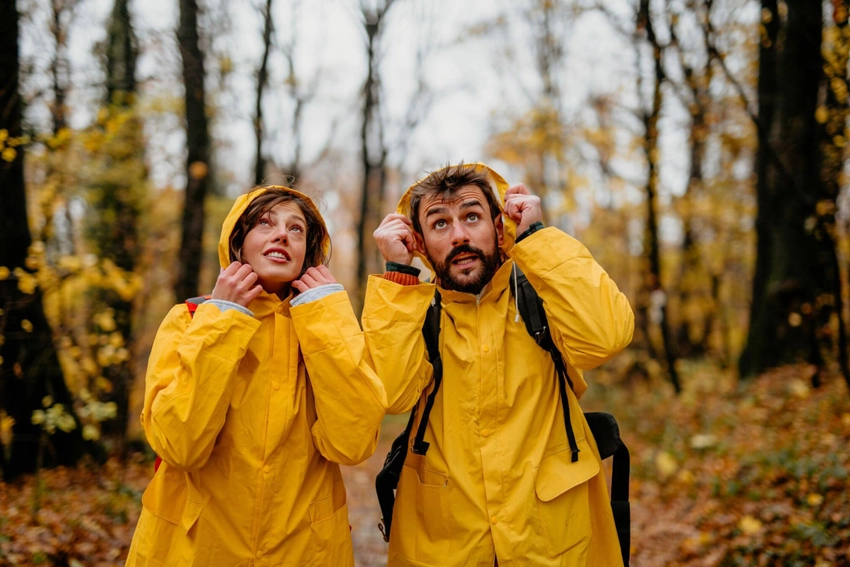Setting out on the adventure of backpacking opens up a world of natural wonders. Beyond the captivating scenery and twisting trails, lies a fundamental skill set essential for every backpacker.
This handbook delves into the essential basics that lay the groundwork for successful backpacking expeditions. These abilities act as the guiding force, leading adventurers through unfamiliar territories, the refuge providing shelter from the elements, and the nourishment sustaining their journey. Whether you’re an experienced trekker or new to the trails, mastering these skills is vital for safety and enhancing outdoor experiences.
Throughout this voyage, we will delve into crucial navigation techniques, explore the art of setting up shelter and campsites, unveil strategies for managing provisions and hydration, and prioritize safety and emergency readiness. Embracing these fundamental principles will enable you to embark on backpacking adventures with confidence, fostering a deeper connection with the wilderness with every step you take.
Come along on this journey as we uncover the essentials of backpacking and unlock the marvels of the great outdoors.
Navigation Skills
Effective navigation skills serve as the cornerstone of prosperous backpacking ventures, empowering you to confidently traverse varied terrain and reach your intended destinations. Whether you’re navigating remote trails or venturing into uncharted wilderness regions, honing these skills is imperative for safety and peace of mind.
Map Interpretation:
Mastering the interpretation of topographic maps is an essential skill for all backpackers. These maps offer vital insights into the landscape, detailing elevation changes, water sources, and notable landmarks. Grasping contour lines, symbols, and scale enables you to accurately gauge distances and strategize your route effectively.
Utilizing a Compass:
Despite the prevalence of GPS technology, a reliable compass remains indispensable for wilderness navigation, particularly in areas with limited satellite reception. Familiarize yourself with basic compass navigation techniques, such as taking bearings, orienting the map, and integrating the compass with map features.
Harnessing GPS Technology:
GPS devices provide invaluable support in navigating challenging terrain. Acquaint yourself with your GPS device’s functionalities, including setting waypoints, tracking routes, and utilizing breadcrumb trails for retracing your steps. Nonetheless, always carry a paper map and compass as backups in case of device malfunction or battery depletion.
Orientation:
Prior to embarking on a hike, take the time to acquaint yourself with your surroundings. Identify prominent landmarks, ascertain the orientation of key features like rivers or mountain ranges, and mentally chart the area. Remain attentive to trail signage, junctions, and natural cues to maintain your course during the hike.
Preparation:
Thorough pre-trip preparation is vital for a successful backpacking expedition. Conduct comprehensive research on your route, considering trail conditions, potential hazards, and available water sources. Develop contingency plans and inform someone of your itinerary before commencing your journey.
By refining your navigation skills and engaging in regular practice, you’ll cultivate the confidence to explore new trails and wilderness expanses securely. Remember, navigation isn’t solely about finding your way—it’s also about relishing the journey and immersing yourself fully in the splendor of nature.
Setting Up Shelter and Campsites for Backpacking
Selecting an appropriate campsite and establishing shelter are crucial proficiencies for backpackers. A well-chosen campsite not only provides comfort and shields from the elements but also minimizes environmental disturbance. Here are key factors to consider for shelter and campsite arrangement:
Choosing the Campsite:
Opt for a level, well-drained spot, steering clear of hazards such as dead trees or rocky terrain. Factor in proximity to water sources, prevailing winds, and exposure to sunlight. Adhere to Leave No Trace principles by utilizing established campsites whenever feasible to mitigate environmental impact.
Varieties of Shelters:
Backpackers have a range of options including tents, hammocks, tarps, or bivy sacks. Each comes with its own advantages and drawbacks based on factors like weight, weather conditions, and personal preference. Practice assembling your chosen shelter beforehand for swift setup in the field.
Setting Up Your Shelter:
Ensure proper assembly for comfort and protection. Follow manufacturer guidelines for tents, securing them tightly and staking them down. For hammocks or tarps, consider variables such as angle and spacing between trees for stability.
Organization of the Campsite:
Enhance efficiency and minimize impact by maintaining order in your campsite. Allocate specific areas for cooking, dining, resting, and storing gear. Hang food in bear-proof containers to deter wildlife encounters and remove all waste when departing.
Leave No Trace Principles:
Adhere to Leave No Trace principles to safeguard wilderness areas. Dispose of waste responsibly, minimize the effects of campfires, and show respect for wildlife. Leave the campsite in a cleaner state than you found it, ensuring it remains enjoyable for others.
Mastering the setup of shelter and campsite guarantees a secure and pleasant experience during backpacking excursions. Prioritize environmental stewardship to conserve wilderness areas for generations to come.
Food and Water Management

Effectively managing food and water is crucial for sustaining energy, hydration, and overall well-being during backpacking expeditions. Understanding how to procure, treat, and conserve these essential resources ensures a safe and gratifying outdoor journey. Here are key guidelines for food and water management:
Maintaining Hydration:
Maintaining adequate hydration is paramount for backpackers, particularly in hot and arid conditions. Carry a sufficient amount of water or locate reliable water sources along your path. Strategize your water consumption to stay hydrated throughout the day, factoring in variables such as activity level, temperature, and humidity.
Water Purification:
It’s imperative to treat water from natural sources to prevent waterborne illnesses. Portable filtration systems, chemical tablets, or UV light devices effectively sanitize water in wilderness settings. Adhere to manufacturer instructions for safe water purification.
Meal Preparation:
Deliberately plan your meals to ensure adequate nutrition and energy for your backpacking excursions. Opt for lightweight, non-perishable foods rich in calories and nutrients, such as dehydrated meals, nuts, dried fruits, and energy bars. Consider factors like weight, size, and preparation time when selecting food for your journey.
Securing Food:
Properly storing food is essential for averting wildlife encounters and reducing environmental impact. Utilize bear-resistant containers or securely hang food and scented items, especially in areas prone to bear activity. Keep food and waste away from your campsite to discourage wildlife and prevent conflicts.
Waste Disposal:
Adhere to Leave No Trace principles by minimizing food waste and disposing of scraps and packaging appropriately. Pack out all trash, including wrappers and peels, to leave your campsite pristine. Refrain from burying or incinerating food waste to prevent attracting wildlife and disrupting ecosystems.
By prioritizing efficient food and water management, you’ll maintain the necessary energy and hydration for safe and sustainable backpacking endeavors. Plan ahead, stay hydrated, and minimize your environmental footprint to savor unforgettable outdoor experiences.
Safety and Emergency Preparedness
Ensuring safety and preparedness for emergencies is paramount for all backpackers, equipping them to effectively handle potential risks and unexpected challenges in the wilderness. By acquiring requisite knowledge, honing skills, and obtaining appropriate gear, you can mitigate risks and embark on outdoor adventures with confidence. Here are essential principles for safety and emergency readiness:
First Aid Supplies:
Always carry a comprehensive first aid kit stocked with essentials for treating common injuries and medical emergencies encountered during backpacking. Items such as bandages, adhesive tape, antiseptic wipes, pain relievers, and blister treatment are indispensable for addressing minor health issues.
Emergency Shelter:
Incorporate a lightweight emergency shelter, such as a space blanket, bivy sack, or compact tent, into your gear to provide refuge from harsh weather conditions or unexpected overnight stays outdoors. Consider factors like durability, weather resistance, and ease of assembly when selecting an emergency shelter.
Communication Tools:
Bring along communication devices like a cell phone, satellite phone, two-way radio, or personal locator beacon (PLB) to summon help in emergencies. Ensure these devices are fully charged and have reliable signal coverage for your hiking area.
Navigation Instruments:
Carry dependable navigation tools such as a map, compass, or GPS device to assist you in navigating through unfamiliar terrain. Familiarize yourself with basic navigation techniques including map reading, compass navigation, and GPS usage to confidently navigate diverse landscapes.
Emergency Protocol:
Develop an emergency protocol outlining steps to take in various emergency scenarios such as injuries, becoming lost, or encountering severe weather. Share your itinerary and emergency protocol with a trusted individual before your trip, and establish a schedule for regular check-ins.
Weather Awareness:
Stay informed about weather conditions in your hiking area and be prepared to adapt your plans based on evolving forecasts. Monitor weather updates before and during your journey, and be ready to seek shelter or modify your route to avoid hazardous conditions.
Leave No Trace:
Adhere to Leave No Trace principles to minimize your environmental impact and conserve natural areas for future generations. Keep your campsite tidy, pack out all garbage and refuse, and refrain from disturbing wildlife or sensitive habitats.
Stay informed, be prepared, and take proactive measures to ensure a safe and enjoyable outdoor adventure.
In Conclusion
Mastery of fundamental abilities proves essential for ensuring safe and gratifying backpacking escapades amidst the breathtaking expanse of nature.
Proficiency in navigation serves as the cornerstone for confidently traversing varied terrains and reaching destinations seamlessly. Skillfully establishing shelters and campsites guarantees comfort and protection against the elements, while adept management of food and water resources sustains energy levels throughout the expedition. Prioritizing safety and readiness equips individuals to tackle unforeseen challenges with finesse.
Adhering steadfastly to Leave No Trace principles remains paramount, minimizing ecological footprints by meticulously eliminating waste and leaving campsites untouched. Approach each adventure with a blend of curiosity, modesty, and deep respect for the marvels of nature, whether embarking on brief excursions or extensive treks. Every stride in the wilderness presents opportunities for personal development, exploration, and profound communion with the natural world.
As you venture into the great outdoors, find solace in the rhythm of your steps, draw inspiration from the beauty surrounding you, and derive fulfillment from surmounting obstacles. Armed with these essential skills, may your backpacking experiences be imbued with enduring recollections and a profound appreciation for nature’s transformative essence.
Ensure your backpacking arsenal includes efficient cooking gear for effortless meal preparation along the trail.
Approach your journeys with an inquisitive spirit, a sense of humility, and an awe for the splendor of the natural realm. Wishing you safe travels, and may your adventures mirror the boundless horizon stretching out before you.





